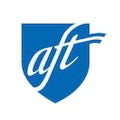Pandemic proves we need internet for all
By Michele Bushey
The majestic beauty of the densely forested mountains that surround Saranac, N.Y., is what makes people fall in love with our town in the Adirondacks. But those same mountains also make it difficult to get sorely needed internet access, Wi-Fi and cell phone service throughout this region. Even in normal times, the lack of internet service is a constant and serious issue here. With the COVID-19 pandemic closing down schools, it’s become even more clear how the lack of internet is affecting students and families, particularly students’ ability to access learning tools.
I am a high school biology teacher. I’m responsible for 77 students, and about a dozen of them don’t have internet access at home. Our school has been closed since March 19 (officially), so in our new normal, I spend a good deal of every day reaching out to those students and their parents by phone just to see how things are going.
Like other school districts, we’ve switched to an online platform to provide instruction. But I reach out directly — one-to-one — to my students who don’t have internet to try to provide alternate instruction. Most days, I’m on the phone and available to answer questions and review lessons — for kids both with and without internet — from about 6 a.m. to midnight. And, I have a daughter, Julia, who is second-grader at the local elementary school.
I’ve been calling and messaging my legislators — including my assemblyman, Billy Jones — and people in the governor’s office to try to get them to understand just how serious internet access is and how the lack of service is impacting families all over this region.
Some of our teachers don’t have internet service. I know teachers who drive to parking lots outside buildings with Wi-Fi where they sit in their cars and do their work. And I’ve heard about parents who are driving their kids to parking lots to connect to Wi-Fi to do their homework — all the while with their cars running.
I realize that these are big problems that can’t be solved easily. But I’m always looking for ways to increase equity for these kids. That’s pretty challenging right now. I know that the teachers I work with would be willing to go to kids’ homes to work with them one-on-one. But we can’t do that with the COVID-19 pandemic. I’ve been teaching biology for 26 ½ years, and I’ve never experienced anything like this in my life. As a biologist with a clear understanding of how pathogens spread, I always knew something like this could happen, but I never thought it actually would.
Before the shutdown, we put together packets and materials for kids to take home. But the closures happened so abruptly that we really didn’t have much time to prepare extensively, and certainly not for a prolonged shutdown. So, the only option we have is to make phone calls to students.
We have a team of teachers at my high school, and we communicate daily by email to share information on what’s happening with our students and their families to try to identify and solve problems that might exist. We know that a number of families are dealing with financial stress because their jobs ended abruptly. Families that were stressed before are worse off now, which is so worrisome to us as educators.
Every time we meet, now by phone and email, we talk about how we can help families: We’re putting together a food delivery system and backpacks with food program; we’ve started working with First Book to provide families with free books for their kids; and I serve on the board of the local United Way, which has been really supportive in working with educators in our region to help struggling families during this crisis.
I am naturally a worrier, and now there are just so many things to worry about. I worry about what’s happening with my students. I worry about the unknowns about this pandemic: how long it will last and the long-term effects when it’s over.
I worry about the economy, especially here in New York where there was a budget deficit even before. I’m very worried about funding for public education, because that’s one of the first things that gets cut. I worry that when this is all over, they may try to balance the budget on our backs, and we’ll be back in schools, but facing larger class sizes and layoffs that make it harder to help students who need the most help.
And I worry that there won’t be investments to help students make up for the time we’ve lost. We’re going to need to develop programs, maybe after school, to give kids extra help, but I wonder if there will be resources for that.
Even with all my worries, I think good will come from this. I believe we will be better bonded to our communities because of this, whenever we come out the other side.
Michele Bushey is a regent living environment (biology) teacher at a high school in Saranac, N.Y., the president of the Saranac Teachers Association and a political action coordinator for the New York State United Teachers.
